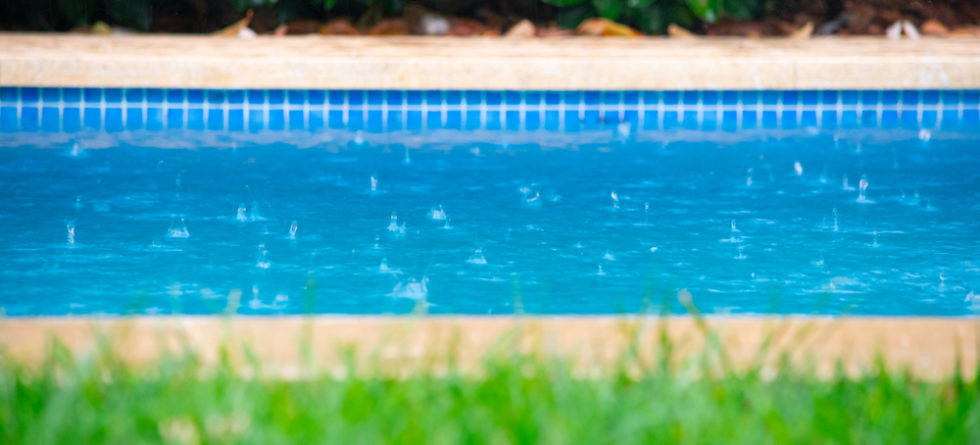Rainwater getting into a swimming pool is a common occurrence, especially during the rainy season. While it may seem like a harmless addition to the pool, there are some potential consequences that can arise from rainwater getting into a pool.
- Dilutes the pool chemicals: Rainwater is essentially distilled water, which means it has a low level of dissolved minerals and contaminants. When it gets into the pool, it can dilute the pool chemicals, including chlorine, pH stabilizers, and algaecides, that are used to keep the pool clean and balanced. This can lead to an imbalance in the water chemistry and make it more difficult to maintain the desired levels.
- Increases the pool’s water level: Heavy rainfall can lead to a significant increase in the pool’s water level, which can cause the water to overflow and potentially damage the pool and its surroundings. It is important to monitor the pool’s water level during and after a rainstorm and remove excess water using a pool skimmer or pump.
- Introduces contaminants: Rainwater can contain various contaminants, such as dirt, debris, pollen, and bacteria, that can enter the pool and affect the water quality. This can lead to cloudy water, algae growth, and other issues that can make the pool unsanitary and uninviting.
- Changes the water temperature: Rainwater is often colder than the pool water, and a sudden influx of cold water can lower the pool’s temperature. This can make it uncomfortable to swim in and may require additional heating to bring the water back to a comfortable temperature.
To prevent these issues, it is important to take proactive measures to minimize the amount of rainwater that enters the pool. This can include using a pool cover during periods of heavy rainfall, redirecting rainwater away from the pool area, and regularly monitoring the pool’s water level and chemistry. Additionally, it is recommended to shock the pool with a high dose of chlorine after heavy rainfall to eliminate any contaminants that may have entered the pool.

